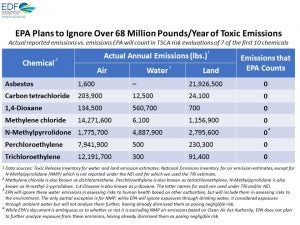Tom Neltner, J.D., Chemicals Policy Director, and Maricel Maffini, Ph.D., Independent Consultant
In May 2018, we released a blog highlighting paper mills as a potentially significant source of drinking water contamination from 14 Food and Drug Administration (FDA)-approved poly- and per-fluorinated alkyl substances (PFAS) used to greaseproof paper. We showed that wastewater discharge could result in PFAS concentrations in rivers in excess of the Environmental Protection Agency (EPA)’s 70 parts per trillion (ppt) health advisory level for drinking water contamination for PFOA and PFOS, the most studied of the PFASs. We identified 269 paper mills with discharge permits that warrant investigation. Readers of the blog have asked some important questions highlighted below. As with most issues involving PFAS, there are many gaps in what we know. Based on the information provided in response to EDF’s Freedom of Information Act (FOIA) request to FDA, we hope to fill in some of the gaps and highlight key information needed to better understand the risks of PFASs.
Question 1: Could textile mills also be a source of PFASs in drinking water?
The answer is “probably.” The FDA-approved PFASs can be used in coating paper that contacts food to repel oil, grease, and water. The same or similar FDA-approved PFASs may be used for non-food uses such as coating textiles to resist stains and repel water.
The processes used to coat paper and textiles differ in some aspects that could affect a mill’s environmental releases. For paper, the PFASs are typically added to the wet wood fibers to be made into paper. In contrast, we understand that PFASs are applied to textiles after the water is removed. Therefore, we would suspect that the amount of PFASs, whether as polymers or impurities, released with the wastewater of a textile mill would be lower compared to that of a typical paper mill. However, there is very little data available to assess the potential environmental release of PFASs from textile mills. Unlike with FDA approvals, there is no environmental review of a chemical’s use in non-food consumer products.[1] So, it would be worthwhile to investigate textile mills for use of PFASs in addition to looking at paper mills.
Using an EPA database[2], we identified 66 textile mills (PDF and EXCEL) in the US, two thirds of which are located in North and South Carolina. Based on wastewater flow, the two largest mills are both operated by Milliken. Its largest facility is in Greenville, South Carolina with a water discharge of 72 million gallons per day (MGD). The second largest is in Bacon, Georgia with a water discharge of 15 MGD. DuPont’s Old Hickory facility, near Nashville, Tennessee, had the third greatest flow at 10 MGD. We do not know whether any of the facilities use and discharge FDA-approved PFASs.
Read More »
